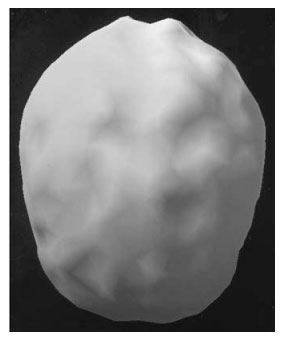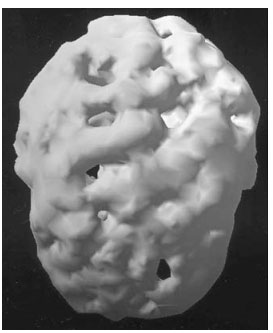Addiction is a brain disease - Treating Alcoholism
The brain of someone addicted to alcohol is a changed brain. The chronic use of any mood-altering chemical first chemically changes the brain as the cells respond to the poison by producing counteracting chemical compounds that reduce the effects on the cell. If the use continues, the brain changes in structure and, finally, it changes in genetics. In chronic alcohol abuse, the body produces chemical, structural, and genetic changes that do the opposite of what the drug is doing. Alcohol is a depressant, so the body produces chemicals, structures, and, finally, genetics to stimulate the brain.
The alcohol is depressing the central nervous system, which the brain picks up as being abnormal, so the brain changes to counteract the drinking. Alcoholics lose brain cells, and professionals can use MRIs to see the loss of brain tissue by the widening of the spaces in the sulci and ventricles of the brain. Figures 2.1 and 2.2 show that the alcoholic’s brain is smaller than the other female’s brain.
Single Positron Emission Computerized Tomography (SPECT) scans are a way of looking how brain cells work. A radio isotope is attached to glucose and then injected in the patient’s bloodstream. Glucose is what brain cells use to work much like a car uses gasoline to run the engine.
When the brain cells breakdown the glucose molecule to release energy, the radioactive isotope is released and can be captured using SPECT scan technology. This gives us a look at how the brain cells are functioning. As you can see from the images, alcohol abuse profoundly affects the functioning of the brain. Large areas of the brain are not working at all. Even after a year of sobriety the brain is clearing but it still is not working normally. This is why our patients need a recovery community to help them work a self-directed program.
 Figure 2.1 Single positron emission computerized tomography (SPECT) of a
Figure 2.1 Single positron emission computerized tomography (SPECT) of a
normal brain. (Amen Clinics, Inc. A Medical Corporation.)
Society views alcoholics as responsible for their problems. To some extent, this is true. Like most of their peers, the alcohol abuser made the early choice to drink, but once addiction kicks in, choice is removed. The person must drink to feel normal. Twenty percent of alcoholics who try to quit drinking on their own without medical management die of alcohol withdrawal delirium. First, the person drinks to feel better; but after neuroadaptation has changed the brain, the patient must drink to live.
Alcohol and drugs change the brain and thereby produce uncontrollable, compulsive drinking. If the alcoholic stops drinking, he or she goes into a biochemical storm called withdrawal. Most addicts would prefer to stop using, but this proves to be very difficult- even impossible- without treatment. Almost all drugs activate the mesolimbic dopamine reward system in the brain.
Alcoholics cannot move back and forth between alcohol abuse and alcoholism because their brain has changed. The functioning that normally allows the patient to exercise choice is disrupted (Koob, 1996; Leshner, 1998).
 Figure 2.2 Single positron emission computerized tomography (SPECT) scan
Figure 2.2 Single positron emission computerized tomography (SPECT) scan
of the brain of a 38-year old with 17 years of heavy weekend alcohol use.
(Amen Clinics, Inc. A Medical Corporation.)
All drugs of abuse activate brain reward pathways that are very old from an evolutionary point of view. These pathways mediate an individual’s response to natural rewards, such as food, sex, and social interaction. Drugs of abuse activate these reward pathways with great power not seen under normal environmental conditions (Everitt & Wolf, 2002; Koob, Sanna, & Bloom, 1998; Nestler, 2001). Repeated alcohol exposure causes neuroadaptation in the brain’s reward pathways, which results in drinking more alcohol. This is the quickest way for an alcoholic to feel normal again, and it causes long-term memories related to alcohol use that produce intense cravings, even after long-term abstinence. Environmental cues can reactivate the brain’s reward pathway, which can lead to relapse (Nestler, 2003).
Alcohol bathes every cell in the body, but its major neurological effects occur in the brain. Over the past 20 years, a great deal of progress has been made in understanding the sites and mechanisms of alcohol’s effect on the brain. A consensus is emerging that ligand-gated ion channels represent a likely site for the acute effects of alcohol on neuronal function. The general effects of alcohol on the body are extremely complex (Woodward, 2003).
###
Robert R. Perkinson, PHD
Helping Your Clients Find the Road to Recovery
Alcoholism - Treatment. I. Title.
RC565.P375 - 2004
616.86’10651- dc22